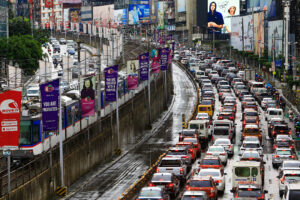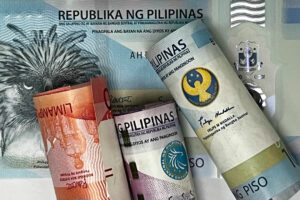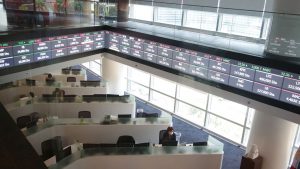Stretching 24 kilometers across Metro Manila’s heartland, Epifanio de los Santos Avenue or EDSA is undoubtedly the most traversed, used, and abused highway in the country. The Metropolitan Manila Development Authority (MMDA) said over 400,000 vehicles passed through it daily in 2023, exceeding its 300,000 carrying capacity.
Considering its preeminent status as the National Capital Region’s main arterial road, one would expect EDSA to be a showcase, the best we could possibly build. Unfortunately, such is not the case. EDSA is noisy, enveloped in fumes, congested, and dilapidated. Incongruous billboards rise on both sides of the road, marring the view. Bumper-to-bumper traffic is the norm.
It is hard to imagine now, but EDSA was not always in such a chaotic state. In the distant past, Highway 54, as it was called then, was fairly presentable. The center islands were planted with grass, and the rotundas were like small parks. Navigating it was a pleasant drive, not the infuriating crawl that it is today.
What happened?
Well, the pressure of an ever-expanding population combined with poor urban planning did us in. The cardinal rule of infrastructure development — planning not only for the present but also for the future — was disregarded.
Let us examine closely some of the developments that went wrong. Take for example the rundown condition of EDSA’s concrete surface. When it was built in the 1950s, we knew it would not last forever; that in 20 to 40 years, we would have to replace it. Preparing for such an eventuality should have been a given so as not to inconvenience the motoring and riding public.
Apparently, this was not heeded. Instead, our public works officials resorted to the band aid solution of reblocking and resurfacing the highway by sections on weekends. It has been decades since we started this practice, but EDSA’s condition has not improved. The moment we reblock a portion of the highway, other sections break down.
The same situation can be said of the on-going maintenance work at the Kamuning flyover. We waited for the result of the USAID study to prompt us to undertake repairs and look at the consequence: it will take a year to finish the job.
Another project on EDSA that merits close scrutiny is the Busway. This is a worthy undertaking, but again was never factored in when the flyovers and interchanges were being put up. Consequently, the Busway is not an end-to-end dedicated lane for buses. There are segments where it crisscrosses and mingles with the other lanes. Moreover, getting in and out of the Busway is a big challenge to commuters. Lastly, it contributed to the “uglification of EDSA with its unsightly barriers. Returning the Busway to its original lane is worth considering.
The Busway’s proponents should also review its primary objective. Is it simply to offer an additional mode of transportation to the riding public, or a way to ease the deteriorating traffic condition on EDSA? To attain the latter, the gauge of its success should be the number of vehicle owners leaving their cars in their garages and availing themselves of the Busway instead.
What must we do to ease the hellish condition of EDSA, and somewhat rehabilitate its aesthetic appearance?
Let’s consider beautification first. Actually, all we have to do is look at countries that are doing this exceptionally well, like Singapore, and copy them. Even if we achieve just 50% of what Singapore has accomplished, that would suffice.
What about the horrendous traffic?
I heard it said before that addressing the traffic problem would need a holistic approach. But how do you do that? What is a holistic approach? This is my take on the matter.
First, we have to improve public transport on EDSA. Some might argue that we already have the MRT3 and the Busway. Aren’t these enough? No. We still have to figure out a way to encourage car owners to take either of the two.
Suppose we decide that the MRT3 is for the general riding public while the Busway is for the elite riders or the car owners (to be frank, you can’t mix them in one transport mode). Then, we should price them accordingly. The MRT3 could retain its present pricing system but the Busway should charge a higher fee. Think of the Love Bus of the 1970s. It was expensive but beautiful, convenient, and had a sense of exclusivity.
Next, we must apply the same standards to the buses or transport modes that will bring the elite commuters from their residences to the Busway system and back.
Consequently, the same quality of transport arrangement should be at hand when commuters get off at the Busway stations on their way to work or home. At present, they have no other options to reach their final destinations but to hail a taxi or get a Grab ride, which are expensive. Moreover, since it would not be possible to take all the riding public to their exact destinations, we must have more covered sidewalks and elevated walkways to make walking bearable even on hot or rainy days.
The next step is charging high toll fees to car users of EDSA to lessen the traffic there. The car owners should have no reason to complain because they would be provided with a good alternative — the Busway.
As we go through the process of analyzing the possible remedies to the deplorable condition of EDSA, we would come to realize that it could not be addressed in isolation. We must also look at its interrelatedness with the broader transportation and infrastructure problems of the whole of Metro Manila.
EDSA is too important for us to neglect and take for granted. If Metro Manila is the communal abode of its residents, then EDSA is the facade and grand entryway. It must inspire and instill pride among Metromanilans.
To prospective investors, EDSA is our business card, a yardstick on how good we are as public managers and project implementers. We must show the world the best we can possibly deliver.
This article reflects the personal opinion of the author and does not reflect the official stand of the Management Association of the Philippines or MAP.
Edgardo “Ed” C. Amistad is a member of the MAP. He is also the adviser of the Philippine Disaster Resilience Foundation (PDRF) and is the former president of UCPB-CIIF Finance and Development Corp., and UCPB-CIIF Foundation.






